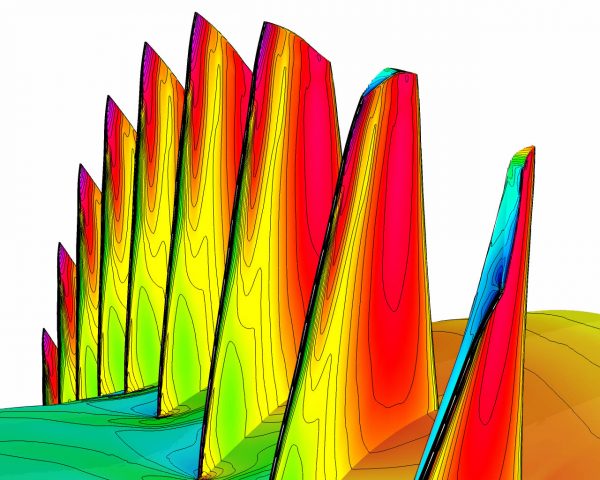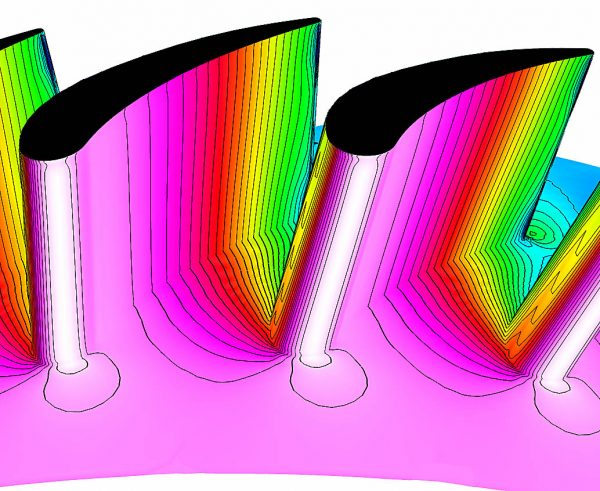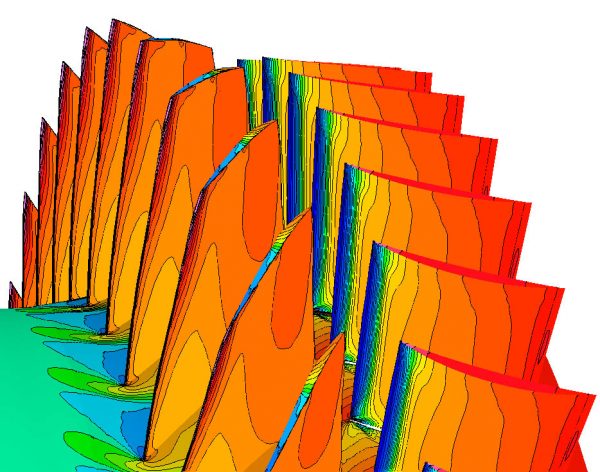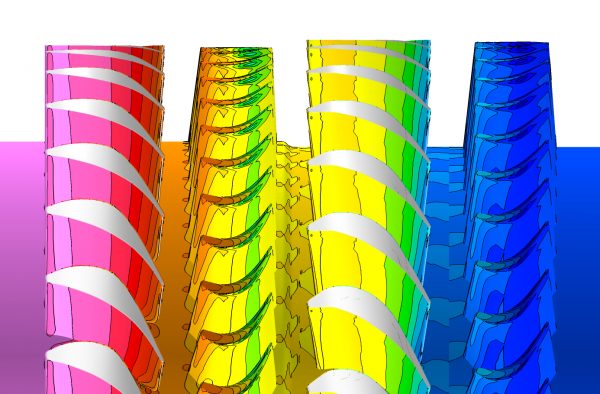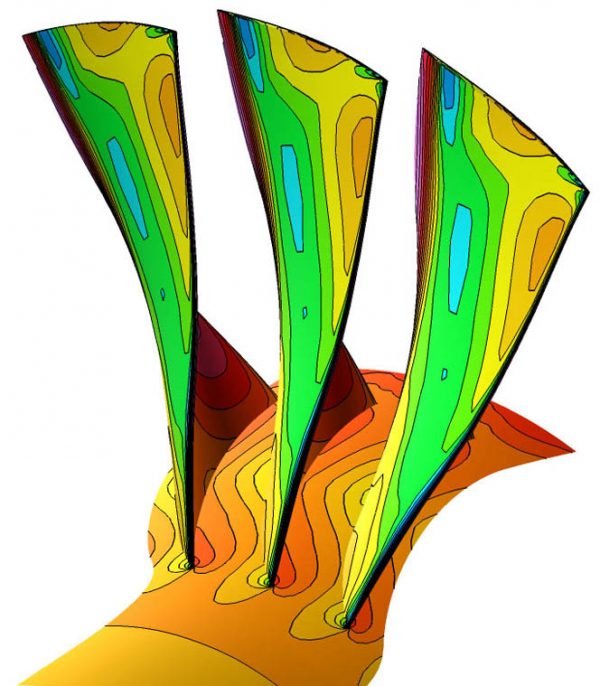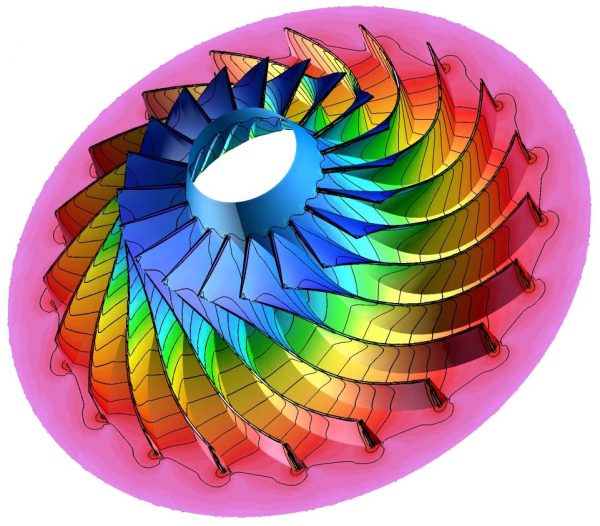SWIFT
SWIFT v. 400
Overview
SWIFT is a multiblock CFD code for the analysis of 3-D flows in turbomachinery. The code solves the thin-layer Navier-Stokes equations using explicit finite-difference techniques. It can be used to analyze linear cascades or annular blade rows with or without rotation. Limited multiblock capability can be used to model tip-clearances and multistage machines.
Applications
- Linear cascades
- Axial compressors and turbines
- Isolated blade rows or multistage machines
- Centrifugal impellers and mixed flow machines without splitters
- Radial diffusers
- Pumps
- Rectangular ducts
Multi-block capability
- C-grids around blades with H-grids upstream
- H-grids around blades
- O-grids for hub and tip clearances (a non-gridded clearance model is also available)
- Mixing planes for multistage calculations
- Version 400 now allows discontinuous spanwise grids at mixing planes
Formulation and differencing schemes
SWIFT solves the Navier-Stokes equations formulated in a Cartesian coordinate system with rotation about the x-axis. The equations are mapped to a general body-fitted coordinate system. Streamwise viscous terms are neglected using the thin-layer assumption, but all cross-channel viscous terms are retained.
- Central difference + artificial viscosity
- Central difference + H-CUSP upwind
- AUSM+ upwind scheme
Turbulence models
- Baldwin-Lomax (algebraic)
- Cebeci-Smith (algebraic)
- Wilcox’s 2006 k-omega (two-equation) with stress limiter and cross-diffusion
- All turbulence models include transition and roughness effects.
Numerical method
- Explicit multi-stage Runge-Kutta scheme
- Variable time-step and implicit residual smoothing for convergence acceleration
- Preconditioning for low-speed (incompressible) flows
Input and output
- Namelist input
- Grids are usually generated using TCGRID and are stored in PLOT3D format
- Solution files are in PLOT3D format
- Printed output of convergence history, spanwise output of average flow properties, and streamwise output of blade surface properties
Computer and graphics requirements
SWIFT requires a Fortran 90 compiler and CFD visualization software for use. Click the button below for more information
GRAPE, RVCQ3D, TCGRID, and SWIFT
The sites linked below are outside the NASA domain and are not endorsed by NASA.
Computer requirements
All codes are supplied as Fortran source code and require a Fortran 90 compiler for use. The Cray, Compaq, GNU, Intel, and SGI compilers have all been used successfully. The codes are usually run on Linux systems, butwill run on on a PC or Mac. Parallel processing is available on multi-core computers using OpenMP directives. Check the Fortran Store for information on Fortran compilers
Graphical output
No graphical output is provided with these codes, but access to some CFD visualization software is required to view and evaluate the grids and solutions. Grid and solution files are in standard PLOT3D format and can be read directly and plotted with the public-domain CFD visualization tool PLOT3D, or the commercial tools FieldView, TecPlot, or EnSight CFD. Check the following web sites for information on CFD visualization software.
| PLOT3D | https://software.nasa.gov/software/ARC-14400-1 |
| TecPlot: | http://www.tecplot.com |
| FieldView: | http://www.ilight.com |
| EnSight CFD: | http://www.ansys.com/products/fluids/ansys-ensight/ |
Test cases included with SWIFT 400
An Excel file with flow conditions, experimental data, and comparisons between computations and experiment is included with SWIFT 400 for each case.
